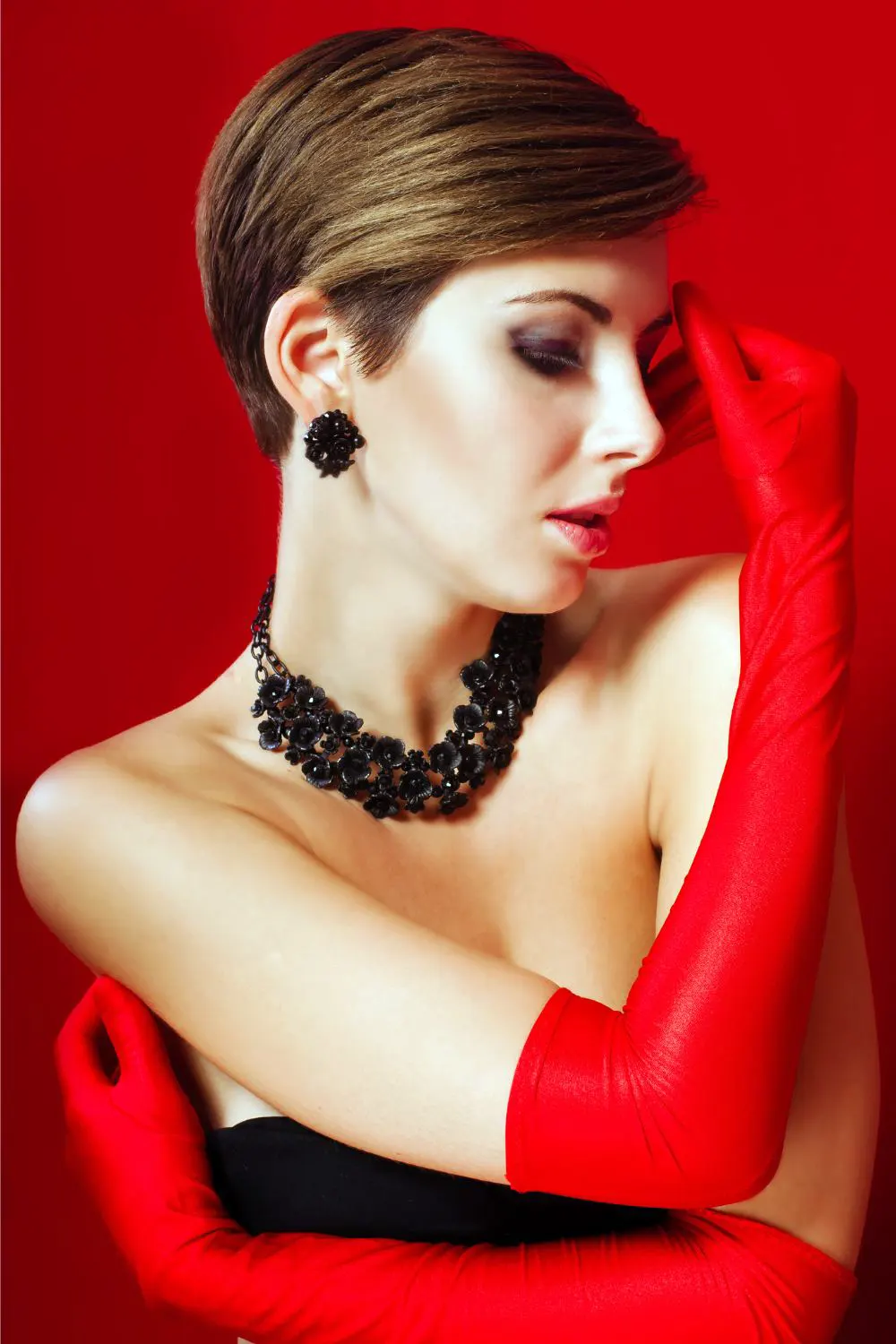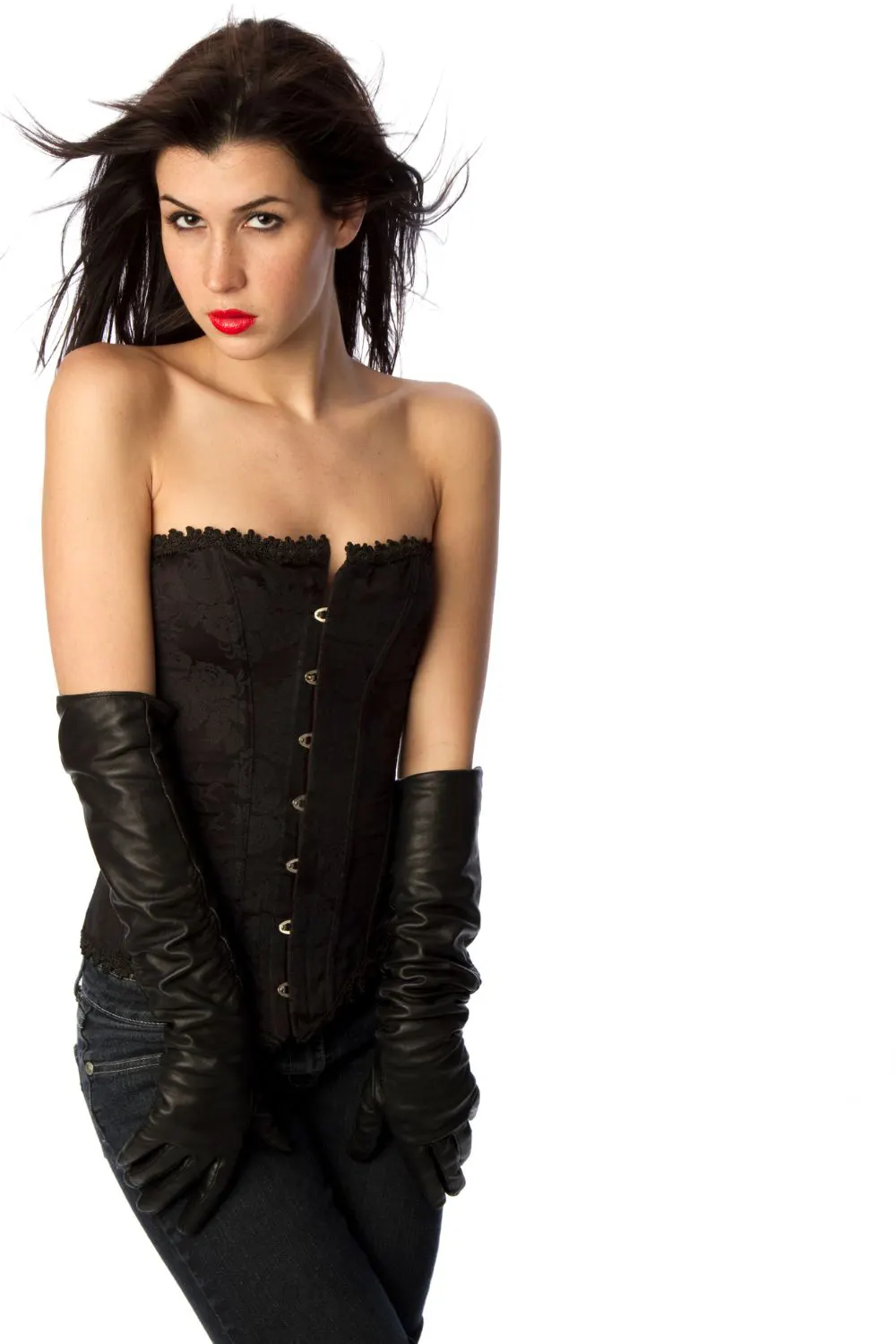For centuries, gloves have given women a subtle yet powerful way to express their place in society. Though often worn for practical purposes, gloves have signified much more.
Gloves distinguished ladies from working women by preserving soft, feminine hands that suggested idleness. Lengthy gloves signaled social class, visually reinforcing hierarchy. Gloves served as supplements to clothing, demonstrating a woman’s expected invisibility within domestic settings.
Victorian etiquette books held up glove-wearing as mandatory for defining respectable womanhood. Not wearing gloves implied lacking manners and social grace. Thus, gloves became essential for exercising oppressive notions of femininity that shunned independence.
While individual women’s needs varied, gloves provided a uniform visual language for navigating tightly prescribed social roles. Though originally a symbol of restriction, gloves granted marginal autonomy by allowing women to push against norms subtly.
Today, women choose gloves for comfort, style, or practicality. But we should remember how, historically, gloves gave women limited yet meaningful agency within heavily gendered confines by subtly helping them define feminine identity on their own terms.
Why did ladies wear gloves?
Fashion accessory
For centuries, gloves have been an essential part of women’s wardrobes, adding elegance and formality to outfits. Gloves originally served practical purposes but evolved into status symbols over time.
Early on, gloves mainly functioned as protection from harsh elements and dirt. During the Middle Ages, only wealthy women could afford gloves made from luxurious materials like silk and fur. Longer gloves indicated higher social rank.
In the Victorian era and Edwardian period, wearing gloves became virtually mandatory for respectable women. Etiquette books advised women to never leave home without them.
Gloves made of pristine white silk, kid leather, and suede were especially treasured. Long buttoned gloves extending past the elbow were extremely stylish.
In the 20th century, gloves continued to signify formality and sophistication, though their use declined after the 1960s.
- During warmer months – Half-gloves covering just the fingers and wrist
- For formal occasions – Long white gloves in fabrics like lace and satin, often matching the dress fabric.
- Special occasions -novelty gloves made of synthetic fabrics like satin and netting in bright colors or patterns.
Today, gloves remain an easy way to polish off an outfit for important events. Though not universally worn like in the past, fashionable gloves can still imbue ensembles with grace, elegance, and authority when called for.
Though styles and materials have changed tremendously over time, gloves have consistently served as symbols of prestige and status for women through the centuries.

Protection from hazards
Women have worn gloves primarily for practical purposes rather than just as a fashion statement for centuries. Gloves protect hands from various hazards and enable women to perform certain activities more safely and comfortably.
- Weather protection: Gloves safeguard hands from cold, rain, wind, and snow. Frostbite and windburn are prevented while keeping hands dry.
- Gardening and housework: Gloves are worn while gardening or doing household chores to cushion hands from repetitive impact and sharp objects that could cause calluses or cuts.
- Workplace safety: In many industries, gloves protect workers from hazardous materials, chemicals, solvents, and bacteria. Special healthcare gloves worn by nurses and doctors prevent contamination.
- Driving: Driving gloves, typically made of leather or synthetic fibers, enhance the grip of steering wheels while shielding hands from abrasion, wind, and cold.
- Social sensitivities: In the past, gloves were believed to keep skin fair and soft, perpetuating ideals of femininity and higher social class. Though obsolete, these ideals initially spurred glove-wearing.
While fashion eventually motivated glove-wearing, practical reasons have primarily driven women to don them throughout history.
Though styles have modernized, gloves still protect women’s hands from various potential harms during daily life and work, especially outdoor activities and manual tasks. The function remains the true necessity for glove-wearing among women.
Symbol of wealth/status
For centuries, gloves have served as symbols of wealth, status, and power for women across different cultures and eras. Luxurious materials, embellishments, and glove length conveyed social messages and reinforced the hierarchy of society.
- Materials: Costly fabrics like silk, kid leather, and fur signified high status. Such gloves showed the wearer could afford expensive imports and skilled craftsmanship.
- Length: Longer gloves indicate an elevated position. Elbow-length styles symbolized nobility and royalty, while shorter varieties were for commoners.
- Embellishments: Decorations like beads, jewels, and embroidery added prominence, showing the wearer could finance nonessential adornments.
- Color: White gloves especially connoted elegance and formality, becoming symbols of purity and refinement for the fashionable Victorian woman.
Glove-wearing was even considered mandatory for “respectable” women in certain contexts to demonstrate covering up and conformity with societal norms. Failure to don appropriate gloves at the right time could constitute a social slight.
Though gloves are no longer viewed as signs of wealth today, the tradition of viewing them as status symbols persisted for centuries. Luxurious materials and intricate details conferred privilege and power upon the women who wore them.
Modesty/etiquette
For centuries, gloves have been worn by women for reasons of modesty and proper etiquette, especially in more formal settings. Covering the hands and arms was seen as polite and respectable behavior.
- Modesty: In some cultures, it was viewed as improper for women to show bare hands in public. Gloves helped maintain decorum by covering the skin. This reinforced ideals of feminine passivity and submissiveness.
- Hiding signs of labor: Soft, delicate gloves signaled high social class by hiding calluses or imperfections that marked physical work. Gloves thus helped women “pass” as idle ladies.
- Preventing contamination: Gloves safeguard hands from dirt, germs, and sweat, which could transmit illness or impart an unsavory image. They promoted personal hygiene.
- Proper etiquette: In places like Europe during the Victorian era, it was considered rude for ladies to eat or drink without gloves. Glove-wearing thus became a basic courtesy and etiquette requirement in polite company.
- Formality: Even today, gloves remain customary attire for formal occasions like weddings and funerals, signifying respect and propriety. They imbue somber events with a sense of traditional decorum.
While modesty and etiquette norms have relaxed over time, gloves still imply adherence to social conventions when called for. They provide women with a means to cover their hands and arms respectfully, expressing deference to shared values of formality, hygiene, and manners.

Promotion of hygiene
While gloves have often been worn for fashion, etiquette, and status reasons, they have also promoted hygiene for some women throughout history. However, glove-wearing for hygiene was not universal and was more common among higher social classes.
- Upper-class women: Wealthy women concerned with maintaining a healthy household lifestyle frequently washed their hands and donned gloves to prepare or serve food. This kept germs from spreading before sanitation standards existed.
- Healthcare workers: Gloves have long been used in clinical settings to prevent the transmission of pathogens between patients and medical staff. They protect hands from exposure to infections and contaminants.
- Food handlers: Today, gloves are routinely worn by people who prepare food commercially. They form a barrier between hands and potentially contaminated surfaces, objects, and food items.
- Hazards professions: Gloves are now commonplace in professions dealing with chemicals, waste, biological materials, and other potential contaminants to shield hands from exposure.
While promoting hygiene was not a primary reason for wearing gloves historically, they have served an important hygienic purpose in modern times.
Gloves provide an effective way to maintain sanitary conditions and reduce the spread of infection during activities that involve contact with germs, contaminants, and hazards. Though fashionable, gloves also function as a public health tool.
Softening/preservation of hands
Women have worn gloves primarily for centuries to keep their hands soft and feminine while protecting them from damage. Gloves helped maintain the condition of women’s hands by shielding them from harsh elements, chemicals, and manual labor.
Smooth, unblemished hands symbolize:
- Higher social class: Wealthy women used gloves made from luxurious materials like silk and kid leather to maintain soft hands, showcasing their elevated status and idleness.
- True femininity: During Victorian times, soft feminine hands were highly valued. Gloves worn daily conformed to genteel norms, distinguishing ladies from working women.
- Avoiding manual work: Gloves hid calluses, abrasions, and discolorations that suggested physical labor, contradicting perceptions of “proper” ladies.
- Element protection: Gloves shielded hands from environmental factors like cold, wind, and sun exposure that dried and roughened skin.
- Chemical protection: Gloves prevented contact with harsh substances in cleaning products and gardens that caused chapping and irritation.
While keeping hands soft is now considered superficial, gloves protect skin from elements and chemicals that cause dryness, damage, and aging. Their practical benefits supersede outdated ideals of femininity by preserving hand health and function.
Practicality for activities
For centuries, women have worn gloves for practical purposes while performing various tasks and activities. Gloves protected hands, increased comfort, and enabled women to accomplish chores more effectively.
- Gardening: Garden gloves cushioned hands from repetitive impact, cushioned impact, and shielded fingers from thorns and dirt. Women easily dug holes, weeded gardens, and pruned bushes while wearing gloves.
- Driving: Driving gloves, typically made from leather or synthetic materials, enhanced grip on steering wheels. Gloves also warmed hands, absorbed sweat, and protected skin from abrasion due to repetitive motion.
- Housework: Gloves worn during chores like washing dishes, cleaning, and laundering clothes protected hands from detergents, bleaches, and abrasive fabrics that dried and chapped skin.
- Sporting: Gloves worn for sports like cycling, skiing, and polo provide insulation from cold, wind, and impacts. Women could perform athletic activities comfortably and avoid injury while wearing proper gloves.
While fashion and status sometimes motivated glove-wearing, practical needs primarily drove women to wear gloves during activities.
Gloves enabled women to maintain soft, healthy hands while completing chores, optimizing performance and safety during physical tasks. The function remains the true necessity for glove-wearing among women.

Summary
For centuries, gloves have been a subtle yet meaningful way for women to express themselves within the constraints of proper femininity. Gloves offered women a uniform visual language for navigating strict societal norms and roles.
While often worn for practical purposes like protection or hygiene, gloves also distinguished “ladies” from working women by preserving soft hands. They hid imperfections caused by manual labor that threatened social standing.
Though usually a symbol of women’s oppression, gloves paradoxically empowered them by providing a means of participating in the only way available at the time: through conforming outward expressions. Gloves granted women limited yet significant agency within rigidly gendered confines.
Today, women choose gloves more for comfort, fashion, or practicality. However, we should remember gloves’ deeper historical significance. For centuries, gloves gave women a silent yet impactful way to self-express within patriarchal environments that sought to keep feminine hands and voices covered. They subtly helped women assert their own definitions of womanhood.
While societal shifts have lessened glove use, we can look to their role in women’s histories as a reminder of creative ways historically oppressed groups sought freedom within the constraints of the past.
FAQ
Why did ladies always wear gloves in the summer?
Ladies did not always wear gloves in the summer, but wearing gloves had some reasons. Gloves could absorb sweat and prevent hands from becoming slippery when working in warm conditions in summer. They could also protect hands from the sun’s harmful UV rays, which could cause skin damage and increase the risk of skin cancer. Additionally, gloves were a practical accessory that could keep hands warm in air-conditioned environments like offices or restaurants.
Did they wear long gloves in the 1920s?
Yes, long gloves were a popular fashion accessory during the 1920s, particularly in women’s fashion inspired by the flapper style and the iconic “Roaring ’20s” era. These gloves were often made of luxurious materials like satin and were designed to be elbow-length, reaching up to the elbows. Long gloves were worn to add elegance and sophistication to outfits, especially for evening events and formal occasions, and were commonly paired with flapper dresses, beaded gowns, and other fashionable attire of the time. They were stretchy, breathable, and available in various colors and styles to match outfits.
Did ladies wear gloves in the 1940s?
Yes, ladies did wear gloves in the 1940s. Gloves were a popular accessory in women’s fashion until the 1960s, and they were often made of silk, cotton, or leather and came in various colors and styles. Women wore gloves for both practical and fashion purposes, such as keeping their hands warm in cold weather or adding elegance to their outfits.
Why did ladies wear gloves while sleeping?
While it is not a widely recognized practice, some individuals wear gloves while sleeping for personal reasons such as keeping their hands warm or protecting their skin. However, historically, gloves were primarily worn for practical, fashion, and social reasons during waking hours.
Why did Victorian ladies wear gloves with no fingers?
Victorian ladies wore fingerless gloves for functionality. The gloves allowed them to perform tasks that required using their fingers, such as writing, eating, or sewing. They were also a more practical alternative to full-fingered gloves, preventing hands from becoming sweaty and allowing them to breathe. Women sometimes wore fingerless gloves in certain activities that required a good grip and tactile touch, such as needlework. Additionally, mittens were sometimes worn outdoors during the colder months for warmth.



